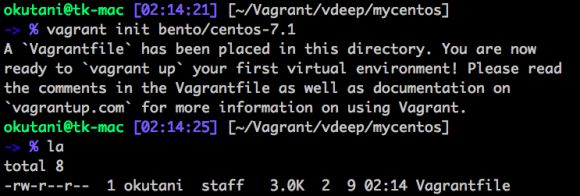


While this is great and allows us to better utilize our hardware, it does have some unavoidable “side effects”. Here at GigaSpaces, most of our infrastructure is virtualized. Our objective seemed very simple to achieve until the moment we realized that we can’t run VirtualBox on our build machines. Packer works somewhat similarly to Vagrant however its focus is on producing images at the end of the process, and not running an environment, as Vagrant does.įor VirtualBox images Packer needs to create a virtual machine on VirtualBox, provision it, and export it at the end of the process as a box file. Packer, one such option, is written by the same guys who wrote Vagrant and is a natural choice for this task. You can create one by using Vagrant itself or one of the many utilities available for performing this task.
Vagrant cloud how to#
So instead of providing a detailed explanation on how to correctly set up a VirtualBox VM, we can summarize our quick start guide in two bullets:Ĭreating a Vagrant box is a very straightforward matter. We could have just provided OVF & VMDK files and have had users import these into VirtualBox however the point was to make the evaluation as simple as possible, and Vagrant strips away potential issues one might encounter when dealing directly with VirtualBox.

Vagrant cloud trial#
The Demoįor the quick trial of Cloudify, we provide a Vagrantfile and Vagrant box with Cloudify’s Manager preinstalled on a VirtualBox image.īy utilizing Vagrant and VirtualBox we are able to provide our customers with a reproducible demo environment to evaluate Cloudify locally on their personal computers.

In this post you’ll have a step-by-step tutorial for how to easily create v2v (virtual to virtual) machines, and create a VMDK disk image that can then be uploaded to any AWS environment. box files for AWS, demonstrating how to overcome issues like nested virtualization and the need for bare metal machines that are also costly and time-consuming to provision. So what better way than to start with the most popular cloud – AWS? This post will dive into one such scenario of porting Vagrant. We wanted to find the most seamless process to do this – that too would be easily replicable per environment.
Vagrant cloud portable#
In the context of our R&D and Ops work on Cloudify, an open source cloud orchestration tool written Python with a TOSCA-based YAML DSL, we often need to create reproducible and portable development environments on the cloud, and had to find a way to overcome these issues. However, with the onset of cloud where many companies choose to do dev and test and QA work on resources on demand, this type of virtual development environment comes with its downsides too, namely issues such as nested virtualization.Ĭloudify! Through a simple Vagrantfile. To this end, many technologies have arisen to answer this need from Vagrant and VirtualBox, and even Docker in certain contexts. Many developers often need to create easily reproducible development environments – for anything from testing to troubleshooting, and even continued development across teams.


 0 kommentar(er)
0 kommentar(er)
